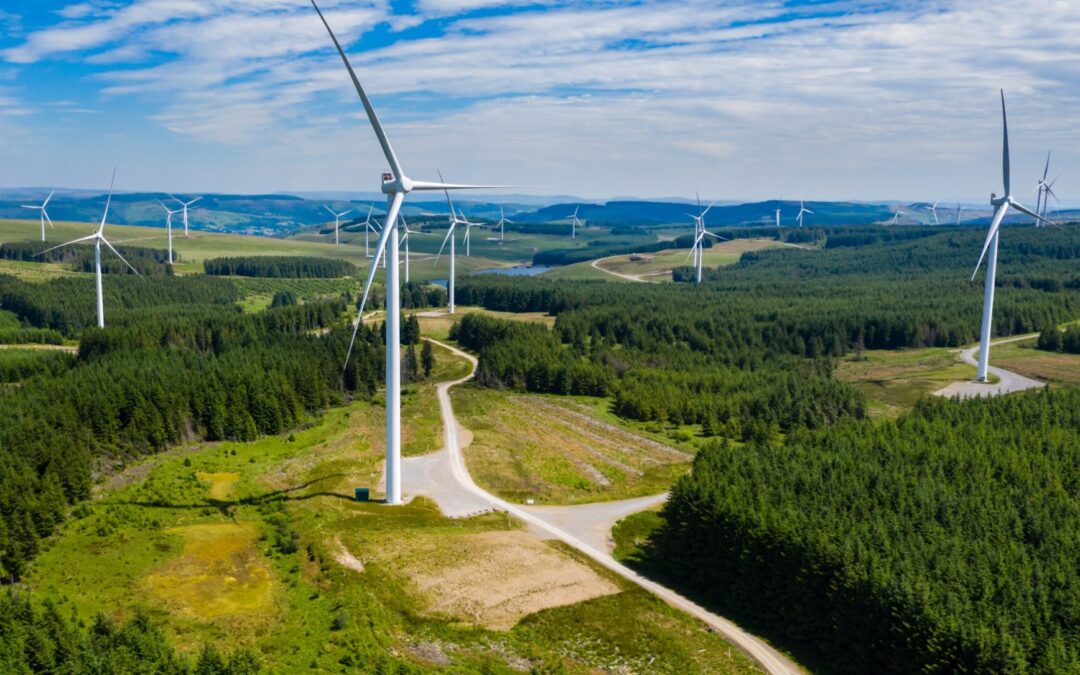A new 121 MW wind farm has been launched in central Poland, the second largest in the country and which features Europe’s longest underground power line.
The facility – developed by a company belonging to Poland’s richest woman – can power the equivalent of up to 183,000 households a year and reduce the consumption of coal, Poland’s main power source, by up to 168,000 tonnes annually.
Over the last decade, Poland has installed a large amount of new wind capacity, with the sector producing 11.5% of the country’s electricity last year (though still well behind the 72.8% coming from coal).
However, new investments have been hindered since the introduction of tough restrictions in 2016 on where onshore turbines can be located. The government is currently seeking to loosen those regulations, which it had itself previously introduced.
The new wind farm, located in Dębsk, around 130 km northeast of Warsaw, features 55 Vesta turbines with a combined capacity of 121 MW.
That puts it second only to the Potęgowo wind farm on Poland’s northern Baltic coast, which opened in 2020 with 81 turbines operating at a capacity of 291 MW, according to a ranking compiled by green energy news service Świat OZE.
The firm behind the new farm, Polenergia, whose main shareholder is billionaire Dominika Kulczyk, estimates that annual generation in Dębsk will amount to 366 GWh, which is equivalent to the annual electricity demand of 183,000 households.
That will in turn help prevent emissions of 318,000 tonnes of carbon dioxide (CO2), 299 tonnes of Sulfur dioxide (SO2) and 302 tonnes of nitrogen oxides (NOx) annually, claims Polenergia.
Poland generated 40% of its electricity from wind on 31 December, a new record.
The figure would have been higher had the grid operator not ordered wind farms to reduce output as the system was unable to use or store surplus energy being produced https://t.co/BJi5T2CuGs
— Notes from Poland 🇵🇱 (@notesfrompoland) January 6, 2023
Electricity from the farm will be transported by a 62-km underground power line, which is the longest in Europe, reports the Gazeta Wyborcza daily. That allows it to avoid using the kind of overhead lines that often provoke protests from residents near wind farms, notes the newspaper.
The opening of the new facility comes as parliament continues to discuss government proposals to soften the so-called “10H rule”, introduced in 2016, which forbids the construction of wind farms where there are buildings within a distance of ten times the height of the turbine
The year before the rule was introduced, Poland had Europe’s second highest amount of newly installed wind capacity, behind only Germany. Afterwards, new wind investments dried up between 2017 and 2019, though they have picked up somewhat since 2020.
Poland’s government has approved legislation to make it easier for onshore wind farms to be built
It would undo restrictions introduced by the same government 6 years ago that led to onshore wind construction, previously among Europe's highest, collapsing https://t.co/VKXTFKkj3V
— Notes from Poland 🇵🇱 (@notesfrompoland) July 6, 2022
Under the new rules proposed by the government, turbines would have to be a minimum of 500 metres from existing buildings, but beyond that their location would be set under development plans decided by local authorities.
However, the idea has faced opposition from within the ruling coalition, delaying the plans. Last month, the head of the parliamentary energy committee, who hails from the main ruling Law and Justice (PiS) party, submitted an amendment that would increase the minimum distance to 700 metres.
Meanwhile, the government and state-owned energy firms have also been pushing ahead with plans to develop Poland’s first offshore windfarms, as they seek to reduce emissions from one of Europe’s most polluting energy sectors as well as to move away from Russian energy supplies.

Daniel Tilles is editor-in-chief of Notes from Poland. He has written on Polish affairs for a wide range of publications, including Foreign Policy, POLITICO Europe, EUobserver and Dziennik Gazeta Prawna.



















